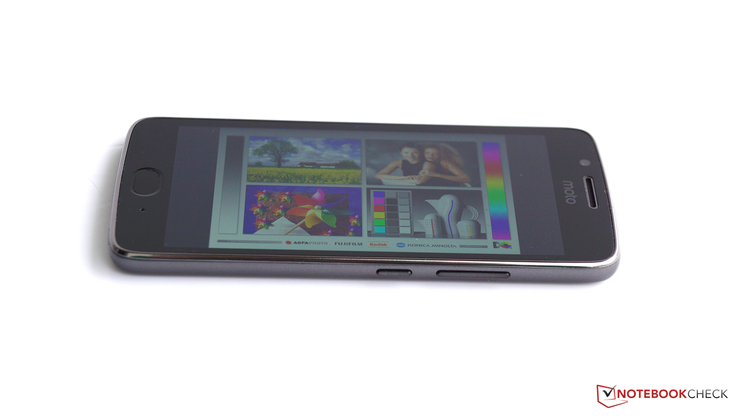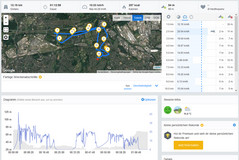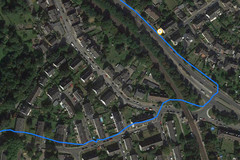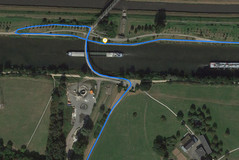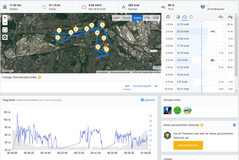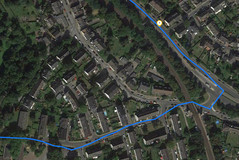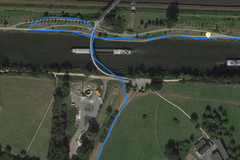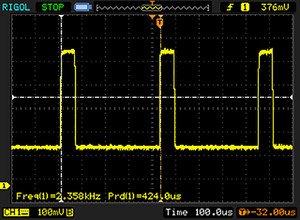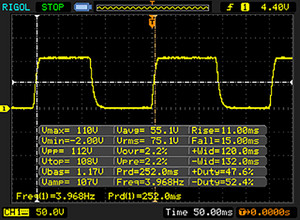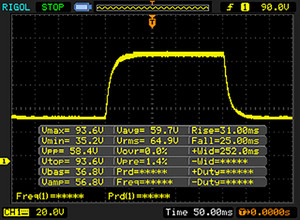Breve Análise do Smartphone Lenovo Moto G5
Os Top 10
» Os Top 10 Portáteis Multimídia
» Os Top 10 Portáteis de Jogos
» Os Top 10 Portáteis Leves para Jogos
» Os Top 10 Portáteis Acessíveis de Escritório/Empresariais
» Os Top 10 Portáteis Premium de Escritório/Empresariais
» Os Top 10 dos Portáteis Workstation
» Os Top 10 Subportáteis
» Os Top 10 Ultrabooks
» Os Top 10 Conversíveis
» Os Top 10 Tablets
» Os Top 10 Smartphones
» A melhores Telas de Portáteis Analisadas Pela Notebookcheck
» Top 10 dos portáteis abaixo dos 500 Euros da Notebookcheck
» Top 10 dos Portáteis abaixo dos 300 Euros
Size comparison
| Networking | |
| iperf3 transmit AX12 | |
| Lenovo Moto G5 | |
| Lenovo Moto G5 Plus | |
| LG K10 2017 | |
| Huawei P8 lite 2017 | |
| Asus Zenfone 3 Max ZC520TL | |
| iperf3 receive AX12 | |
| Lenovo Moto G5 | |
| Lenovo Moto G5 Plus | |
| Huawei P8 lite 2017 | |
| Asus Zenfone 3 Max ZC520TL | |
| LG K10 2017 | |
| |||||||||||||||||||||||||
iluminação: 92 %
iluminação com acumulador: 660 cd/m²
Contraste: 2276:1 (Preto: 0.29 cd/m²)
ΔE ColorChecker Calman: 4.9 | ∀{0.5-29.43 Ø4.78}
ΔE Greyscale Calman: 4.8 | ∀{0.09-98 Ø5}
Gamma: 2.18
CCT: 7357 K
| Lenovo Moto G5 IPS, 1920x1080, 5" | Lenovo Moto G5 Plus IPS, 1920x1080, 5.2" | Lenovo Moto G4 IPS, 1920x1080, 5.5" | LG K10 2017 IPS, 1280x720, 5.3" | Huawei P8 lite 2017 IPS, 1920x1080, 5.2" | Asus Zenfone 3 Max ZC520TL IPS, 1280x720, 5.2" | |
|---|---|---|---|---|---|---|
| Screen | -22% | -23% | -38% | -23% | -23% | |
| Brightness middle (cd/m²) | 660 | 503 -24% | 724 10% | 384 -42% | 575 -13% | 507 -23% |
| Brightness (cd/m²) | 625 | 495 -21% | 723 16% | 350 -44% | 559 -11% | 474 -24% |
| Brightness Distribution (%) | 92 | 96 4% | 87 -5% | 85 -8% | 91 -1% | 85 -8% |
| Black Level * (cd/m²) | 0.29 | 0.31 -7% | 0.71 -145% | 0.36 -24% | 0.39 -34% | 0.53 -83% |
| Contrast (:1) | 2276 | 1623 -29% | 1020 -55% | 1067 -53% | 1474 -35% | 957 -58% |
| Colorchecker dE 2000 * | 4.9 | 6.2 -27% | 4.5 8% | 6 -22% | 5.2 -6% | 4.7 4% |
| Colorchecker dE 2000 max. * | 7.6 | 9.8 -29% | 8.4 -11% | 14 -84% | 10.3 -36% | 7.2 5% |
| Greyscale dE 2000 * | 4.8 | 6.8 -42% | 4.9 -2% | 5.9 -23% | 7.2 -50% | 4.8 -0% |
| Gamma | 2.18 101% | 2.33 94% | 2.44 90% | 2 110% | 2.4 92% | 2.25 98% |
| CCT | 7357 88% | 8113 80% | 6496 100% | 8042 81% | 7224 90% | 6441 101% |
* ... menor é melhor
Cintilação da tela / PWM (modulação por largura de pulso)
| Tela tremeluzindo/PWM detectado | 2358 Hz | ≤ 1 % configuração de brilho | |
A luz de fundo da tela pisca em 2358 Hz (pior caso, por exemplo, utilizando PWM) Cintilação detectada em uma configuração de brilho de 1 % e abaixo. Não deve haver cintilação ou PWM acima desta configuração de brilho. A frequência de 2358 Hz é bastante alta, então a maioria dos usuários sensíveis ao PWM não deve notar nenhuma oscilação. [pwm_comparison] Em comparação: 53 % de todos os dispositivos testados não usam PWM para escurecer a tela. Se PWM foi detectado, uma média de 8111 (mínimo: 5 - máximo: 343500) Hz foi medida. | |||
Exibir tempos de resposta
| ↔ Tempo de resposta preto para branco | ||
|---|---|---|
| 26 ms ... ascensão ↗ e queda ↘ combinadas | ↗ 11 ms ascensão | |
| ↘ 15 ms queda | ||
| A tela mostra taxas de resposta relativamente lentas em nossos testes e pode ser muito lenta para os jogadores. Em comparação, todos os dispositivos testados variam de 0.1 (mínimo) a 240 (máximo) ms. » 61 % de todos os dispositivos são melhores. Isso significa que o tempo de resposta medido é pior que a média de todos os dispositivos testados (20.2 ms). | ||
| ↔ Tempo de resposta 50% cinza a 80% cinza | ||
| 56 ms ... ascensão ↗ e queda ↘ combinadas | ↗ 31 ms ascensão | |
| ↘ 25 ms queda | ||
| A tela mostra taxas de resposta lentas em nossos testes e será insatisfatória para os jogadores. Em comparação, todos os dispositivos testados variam de 0.165 (mínimo) a 636 (máximo) ms. » 92 % de todos os dispositivos são melhores. Isso significa que o tempo de resposta medido é pior que a média de todos os dispositivos testados (31.6 ms). | ||
(±) A temperatura máxima no lado superior é 43 °C / 109 F, em comparação com a média de 35.2 °C / 95 F , variando de 21.9 a 247 °C para a classe Smartphone.
(+) A parte inferior aquece até um máximo de 36.6 °C / 98 F, em comparação com a média de 34 °C / 93 F
(±) Em uso inativo, a temperatura média para o lado superior é 32.2 °C / 90 F, em comparação com a média do dispositivo de 32.9 °C / ### class_avg_f### F.
Lenovo Moto G5 análise de áudio
(+) | os alto-falantes podem tocar relativamente alto (###valor### dB)
Graves 100 - 315Hz
(-) | quase nenhum baixo - em média 26.5% menor que a mediana
(±) | a linearidade dos graves é média (10.3% delta para a frequência anterior)
Médios 400 - 2.000 Hz
(±) | médios mais altos - em média 5.4% maior que a mediana
(+) | médios são lineares (6.3% delta para frequência anterior)
Altos 2 - 16 kHz
(+) | agudos equilibrados - apenas 3.8% longe da mediana
(+) | os máximos são lineares (3.2% delta da frequência anterior)
Geral 100 - 16.000 Hz
(±) | a linearidade do som geral é média (23.8% diferença em relação à mediana)
Comparado com a mesma classe
» 54% de todos os dispositivos testados nesta classe foram melhores, 9% semelhantes, 38% piores
» O melhor teve um delta de 11%, a média foi 35%, o pior foi 134%
Comparado com todos os dispositivos testados
» 70% de todos os dispositivos testados foram melhores, 6% semelhantes, 23% piores
» O melhor teve um delta de 4%, a média foi 24%, o pior foi 134%
Lenovo Moto G4 análise de áudio
(+) | os alto-falantes podem tocar relativamente alto (###valor### dB)
Graves 100 - 315Hz
(-) | quase nenhum baixo - em média 24.6% menor que a mediana
(±) | a linearidade dos graves é média (10.2% delta para a frequência anterior)
Médios 400 - 2.000 Hz
(+) | médios equilibrados - apenas 4.4% longe da mediana
(+) | médios são lineares (4.7% delta para frequência anterior)
Altos 2 - 16 kHz
(+) | agudos equilibrados - apenas 3.4% longe da mediana
(+) | os máximos são lineares (3.1% delta da frequência anterior)
Geral 100 - 16.000 Hz
(±) | a linearidade do som geral é média (18.6% diferença em relação à mediana)
Comparado com a mesma classe
» 21% de todos os dispositivos testados nesta classe foram melhores, 9% semelhantes, 70% piores
» O melhor teve um delta de 11%, a média foi 35%, o pior foi 134%
Comparado com todos os dispositivos testados
» 41% de todos os dispositivos testados foram melhores, 8% semelhantes, 51% piores
» O melhor teve um delta de 4%, a média foi 24%, o pior foi 134%
| desligado | |
| Ocioso | |
| Carga |
|
Key:
min: | |
| Lenovo Moto G5 2800 mAh | Lenovo Moto G5 Plus 3000 mAh | Lenovo Moto G4 3000 mAh | LG K10 2017 2800 mAh | Huawei P8 lite 2017 3000 mAh | Asus Zenfone 3 Max ZC520TL 4100 mAh | |
|---|---|---|---|---|---|---|
| Power Consumption | -4% | -19% | 8% | -47% | -25% | |
| Idle Minimum * (Watt) | 0.73 | 0.91 -25% | 0.65 11% | 0.76 -4% | 1.44 -97% | 0.74 -1% |
| Idle Average * (Watt) | 1.64 | 1.83 -12% | 1.89 -15% | 1.59 3% | 2.47 -51% | 2.04 -24% |
| Idle Maximum * (Watt) | 1.68 | 1.87 -11% | 1.92 -14% | 1.61 4% | 2.58 -54% | 2.22 -32% |
| Load Average * (Watt) | 3.46 | 3.17 8% | 5.28 -53% | 3.24 6% | 4.55 -32% | 5.57 -61% |
| Load Maximum * (Watt) | 6.13 | 4.87 21% | 7.45 -22% | 4.15 32% | 6.3 -3% | 6.59 -8% |
* ... menor é melhor
Pro
Contra
À primeira vista, já podemos dizer que o Moto G5 é um smartphone muito interessante: acessível, porém equipado com uma tela premium, carcaça de metal leve, bom interior, e bateria substituível pelo usuário. A Lenovo parece estar em uma missão para provar que mesmo competindo no mercado de gama média inferior não necessariamente deve significar telas escuras de baixas resoluções e ICs de comunicação lenta.
Por $250 você recebe uma tela brilhante com incríveis níveis de preto e contraste, um bom alto falante, uma sólida carcaça de metal, uma bateria substituível pelo usuário, e um leitor de digitais. A adição de um veloz Wi-Fi e armazenamento, bom desempenho, e boa qualidade das chamadas, tornam o telefone quase perfeito para seu preço. Apenas a câmera poderia se desempenhar um pouco melhor em cenários com pouca luz, a temperatura sob uso intenso é um pouco alta para o nosso gosto, e a duração da bateria poderia ser melhor.
O Moto G5 oferece muito, e sua razão de preço/desempenho é bastante bom. A insuficiente duração da bateria é compensada pelo fato de que a bateria é substituível pelo usuário.
A diferença de preço entre o G5 e o G5 Plus é ainda maior agora principalmente graças ao fato de que a Lenovo conseguiu fazer o G5 ainda mais barato do que o G4. A Lenovo já ganhou nosso respeito melhorando os componentes ao mesmo tempo em que reduziu o preço, e isso torna o G5 em uma alternativa intermediária muito interessante.




